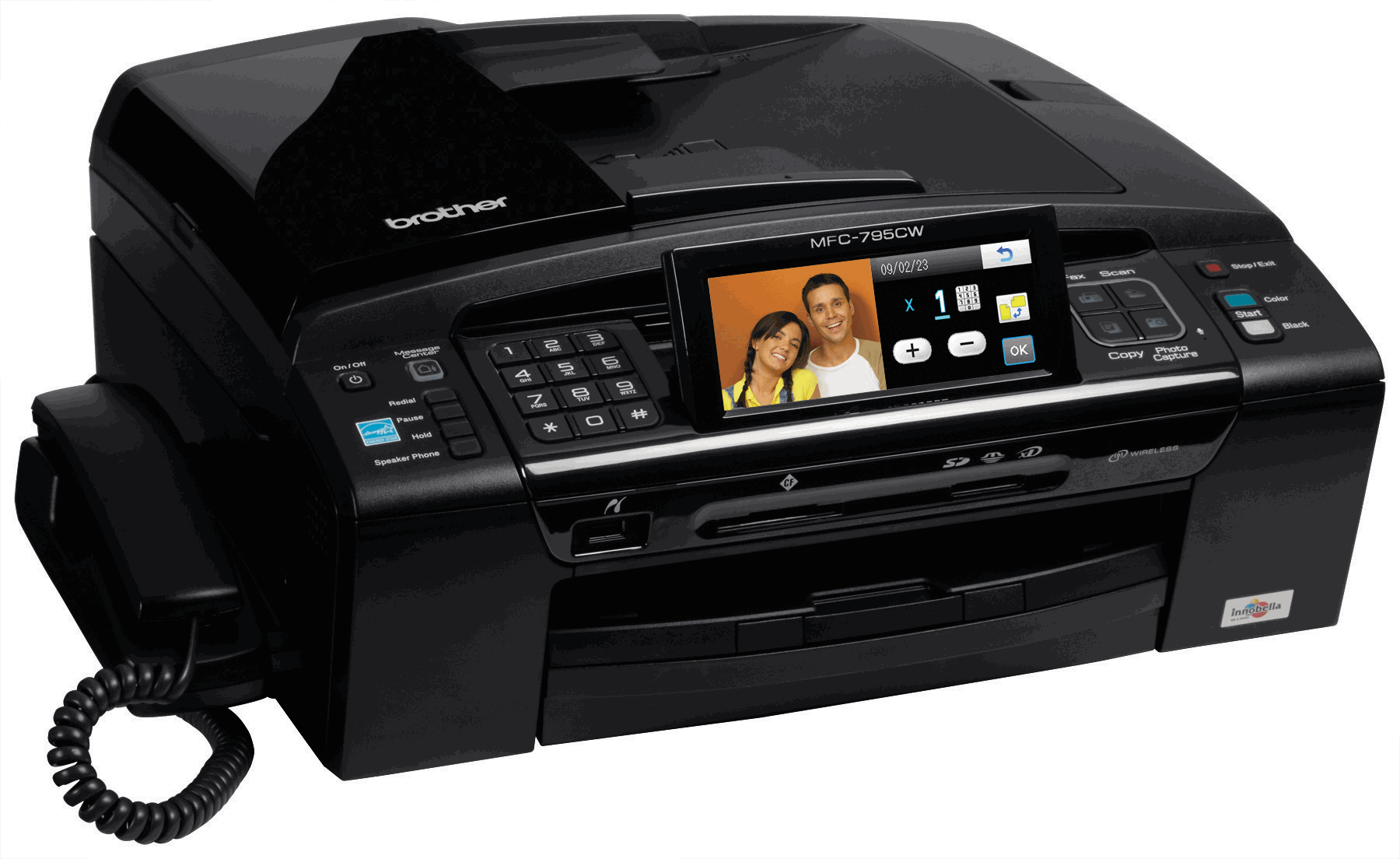SPONSORED: Brother Inkjet All-in-One Printer Buyers Guide
Brother Injet All-in-Ones - Part 1

MFC-J410w: $99.99
Bother’s all-in-one inkjet line, actually starts with the $79.99 DCP-J125, and if you’re looking for a rock-bottom price, the J125 is probably the way to go. The unit boasts print resolutions of up to 6000 x 1200 dpi and maximum print speeds of 33 pages per minute (ppm) in black or 27 ppm in color. Both connect by USB, feature integrated media card readers, and have optical flatbed scanning resolutions of up to 1200 x 2400 dpi. The J410W has a slightly quicker copying time—up to 23 copies per minute (cpm) in black and 20 cpm in color compared to 20 and 18 cpm, respectively, for the J125—but that’s not really what justifies the $20 upgrade.
For starters, the J410w has send-only faxing capabilities. Most of us can’t remember the last time we received a fax, but if you handle financial documents of any kind, many banks still want forms faxed to them. Perhaps more useful is the 15-page automatic document feeder (ADF) built into the J410W. With this, you can load a multi-page document, start scanning, and walk away rather than load each page manually. Most importantly, the J410w features 802.11n wireless connectivity. For us, the convenience of Wi-Fi alone more than justifies the $20 price delta between printers.
Another great Brother bonus is the iPrint&Scan app for iPhone and Android devices. Provided you have a compatible printer model (which includes the J410w), the app will allow you to wirelessly print JPEGs from your phone. The app will also receive scanned images from various Brother Printers via your wireless LAN. So say someone walks in with an old photograph or a contract you want on your phone. Normally, you would have to save to your PC, tether the phone via USB for file copying, or email the saved JPEG to yourself. With iPrint&Scan, you simply scan straight to the phone. It’s a minor selling point but potentially a great convenience, depending on your document handling habits.
At 17.2 lbs., the J410w isn’t exactly portable, but it’s certainly compact for desktop use at 15.4 x 14.8 x 7.1 inches. The integrated 1.9” color LCD display makes navigating menus easy, and Brother throws in all of the expected document viewing, management, and optical character recognition (OCR) software. It’s no secret that printer manufacturers make their hardware prices as low as possible, knowing that higher margin consumables will help make up the difference, but for light home use, the J410w still emerges as a steal.

MFC-795CW: $179.99
In general, you should keep an eye out for technology that uses existing resources more effectively. That’s value. If you already have a traditional land line for faxing, it may make sense also to retain that line for voice use, if only in case your regular VoIP connection fails. The 795CW is one of Brother’s few units that integrate a corded handset as well as Message Center, the marketing term Brother uses for full duplex calling capability with a digital answering machine (29 minutes maximum storage). The feature does cost a few dollars and adds to the printer’s footprint, but for those who still use copper-based calling it can be a handy add-on.
The 795CW takes a slight hop in output speeds, reaching up to 35 ppm in black and 38 ppm in color. Like the J410w, the 795CW uses a four-cartridge ink system, which you want because individual ink cartridges are usually more cost effective than multi-color cartridges. Also like its entry-level sibling, the 795CW has a 100-sheet input capacity, but the $180 model includes a 20-sheet 4 x 6 photo bypass tray (convenient for not mixing media when handling different output jobs).
The 795CW offers a USB port and support for more flash card types than the J410w, making it a better fit for those doing a lot of photography. But the biggest benefit with this model may be its Ethernet port. Small offices tend to be outfitted with Ethernet in the walls. The superior speed of a wired connection is better than Wi-Fi (also supported in the 795CW), but, more importantly, Ethernet isn’t prone to the disruptive interference that plagues 802.11 connections. A LAN-based connection makes the printer available to all network users, and Ethernet ensures that (as long as the switch stays up) everyone has optimal printing availability.
Current page: Brother Injet All-in-Ones - Part 1
Prev Page Brother Injet All-in-Ones - Introduction Next Page Brother Inkjet All-in-Ones - Part 2Stay on the Cutting Edge
Join the experts who read Tom's Hardware for the inside track on enthusiast PC tech news — and have for over 25 years. We'll send breaking news and in-depth reviews of CPUs, GPUs, AI, maker hardware and more straight to your inbox.
-
MauveCloud I bought the MFC-6890CDW back in November. Had the MFC-J6510DW been released yet? If so, I didn't see it. I mainly saw the MFC-6490CW and MFC-5890CN as alternatives, which have no support for duplex printing.Reply -
Blaire Nadal Brother printers is catching up with the speedy development of printer's features. And I believe that is actually what it should do since the market is a raging world. HP now had its partnership with Google and so on.Reply
Most Popular

